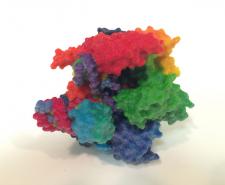The gene editor CRISPR won’t fully fix sick people anytime soon. Here’s why
By Jocelyn Kaiser,
Science/AAAS
| 05. 03. 2016
Untitled Document
This week, scientists will gather in Washington, D.C., for an annual meeting devoted to gene therapy—a long-struggling field that has clawed its way back to respectability with a string of promising results in small clinical trials. Now, many believe the powerful new gene-editing technology known as CRISPR will add to gene therapy’s newfound momentum. But is CRISPR really ready for prime time? Science explores the promise—and peril—of the new technology.
How does CRISPR work?
Traditional gene therapy works via a relatively brute-force method of gene transfer. A harmless virus, or some other form of so-called vector, ferries a good copy of a gene into cells that can compensate for a defective gene that is causing disease. But CRISPR can fix the flawed gene directly, by snipping out bad DNA and replacing it with the correct sequence. In principle, that should work much better than adding a new gene because it eliminates the risk that a foreign gene will land in the wrong place in a cell's genome and turn on a cancer gene. And a CRISPR-repaired gene...
Related Articles
By Josie Ensor, The Times | 12.09.2025
A fertility start-up that promises to screen embryos to give would-be parents their “best baby” has come under fire for a “misuse of science”.
Nucleus Genomics describes its mission as “IVF for genetic optimisation”, offering advanced embryo testing that allows...
By Hannah Devlin, The Guardian | 12.06.2025
Couples undergoing IVF in the UK are exploiting an apparent legal loophole to rank their embryos based on genetic predictions of IQ, height and health, the Guardian has learned.
The controversial screening technique, which scores embryos based on their DNA...
By Frankie Fattorini, Pharmaceutical Technology | 12.02.2025
Próspera, a charter city on Roatán island in Honduras, hosts two biotechs working to combat ageing through gene therapy, as the organisation behind the city advertises its “flexible” regulatory jurisdiction to attract more developers.
In 2021, Minicircle set up a...
By Vardit Ravitsky, The Hastings Center | 12.04.2025
Embryo testing is advancing fast—but how far is too far? How and where do we draw the line between preventing disease and selecting for “desirable” traits? What are the ethical implications for parents, children, clinicians, and society at large? These...




